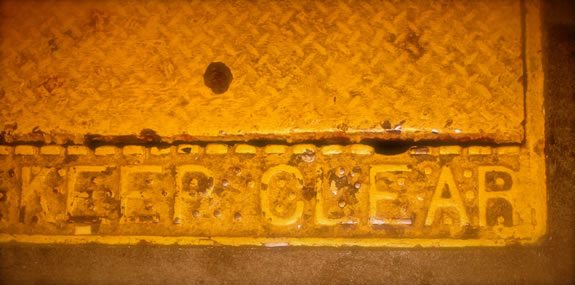
THERE’S A PRESUMPTION OF BRAND GATHERING—PEOPLE CLUSTER AROUND BRANDS THAT STAND FOR SOMETHING, THEY HAVE AN INTENTION THAT’S CLEAR—THEIR STANCE IS VISIBLE.
That might come down to belief,
“I believe in this brand because the story is true; look what they’re doing, see what you can do with this brand—the brand story, like a campfire, you can gather around.”
How close in
are you—do you know what you stand for? Belief is, as we’ve pointed out, etymologically linked as a word to “be” and “love.” [“be” from the verb analogy] + PIE root *leubh– “to care, desire, love.”]

You say you know brand stance and meaning,
but is that just you alone?
Or others?
For me, running the business of a brand, it’s not a perfected assumption that “I know the brand, that I know what it stands for,” until I’ve organized a team around it. And I’m not talking about everyone speaking from some mission statement calling card, or a memorized positioning. Rather, brands being humanized, populated by humans to each their own telling. For as we’ve discussed, great brands have a kind of reflectivity “this is my brand and here’s my story about it—what it means for me.” You might think of your iPhone, or your Galaxy, or a favorite pair of shoes, a shirt—a something that, even as a business enterprise, feels closer to you, your interests, your perspectives on the future. And to develop this kind of relational characteristic requires that the teams know what the brand stands for.

I was working with a team in Texas, and we were talking about modeling brand relationships—how does a brand team synchronize with a community, understand them, and what drives them to support, hold and embrace a brand and the layering of experiences it might offer? You, as the brand owner, could say that any alignment to relevance—the first utile step towards personal connection, comes from knowing who you’re selling to—who’s your point of reference? Audience first, then positioned stance. “These people know what they’re doing, they’re like me.”

When a brand has a stance, then others will inherently gather round, in the evidence that they hold the brand,
they stand in.
Standing in, they share.
They understand.

In our work, we look for groupings of “brand commitments” — those that are committed to the brand, and what it stands for — they stand in.
In seeking out and gathering these groups, we look for the possibility of their personal insights.
What can they share?
Could they help build a renewed positioning insight for the brand enterprise and the products that it offers?
Yes.
As in the noted Texas brand experience, we go into their houses, we talk to their families, we dig in, excavate the archaeology of their relationships and bring selected committees together, gathered to offer their insights and visual and textual framings of context in their personal commitment to that relationship.
When a person holds something [in this instance, about a brand,] it’s their story — the brand becomes their personal property, it’s their story, carried as a story in a story, that holds them takes them deeper into the soul of the brand and their holding of that relationship. Memory holds that telling true—because it’s theirs. And theirs to share, to have and hold, and to tell again in their manner.
That modeling leads to a new circling,
a new layering of a sheathing translucency to the shine of the brand.
That epiphanic leap is that sensation of discovery—
“this is for me,
it’s just what I need.”
Name, visuals, relevance and utility, resonance and vibe—they synchronize, interlace, and alignments occur.
Stand back,
stand in [between],
stand clear.

Stand for something.
TIM | GIRVIN | seattle waterfront studios
….
THE STRATEGY OF RE-IMAGININGENGAGEMENT
Happiness experience design, storytelling + brand